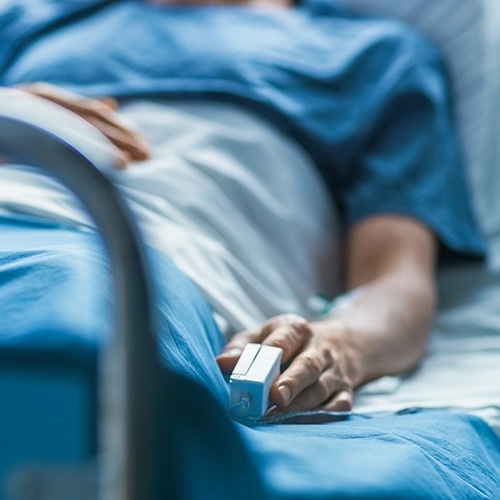With the use of a revolutionary technology created by the University of South Australia, tiny smart bed sensors included in hospital mattresses could put an end to painful and sometimes fatal pressure sores.
 Smart bed sensors embedded in hospital mattresses could stop pressure sores. Image Credit: University of South Australia
Smart bed sensors embedded in hospital mattresses could stop pressure sores. Image Credit: University of South Australia
Researchers at UniSA have created tiny optical fiber sensors that can be fastened to a mattress’ top surface and track heart and breathing rates and movement.
The discrete sensors can pick up a patient’s breathing when they move over, leave their bed, or are just immobile in a hospital setting.
As a result, nurses can be remotely informed if a patient has not moved after a certain amount of time, prompting them to change the patient’s posture.
The device might “substantially relieve” the load on hospital staff that comes with needing to continuously check patients for pressure sores, according to lead researcher Dr. Stephen Warren-Smith.
Each year, thousands of older Australians in hospitals and nursing homes experience pressure injuries, or ulcers, which take a long time to heal and can be fatal. At the very least these injuries can cause severe pain, disrupt sleep, affect their mood as well as their rehabilitation, mobility and quality of life.
Dr. Stephen Warren-Smith, Lead Researcher, University of South Australia
The optical fiber sensors are placed in the same area as a person but are not physically on them, in contrast to the sensors that people wear on their wrists to track physical activity and biological indications.
To monitor patients, hospitals now utilize weight-based sensors or in-room cameras, but both offer drawbacks, according to Dr. Warren-Smith.
Dr. Warren-Smith added, “Existing weight-based hospital sensors cannot predict when a patient leaves the bed until their feet touch the floor, leaving little time for nursing staff to respond in the event of a fall. Also, there are privacy issues with camera-based technology.”
The optical fiber sensors can determine whether a person is on the bed even if they are still for extended periods of time and are sensitive enough to record heart and respiratory rates.
“Respiration rates are often the first sign that a patient is deteriorating. This normally requires devices to be attached to the patient, either on the chest, as a mask on the face, or ventilator. These can be restrictive and sometimes inappropriate in an aged care setting. Monitoring vital signs continuously, unobtrusively, and cheaply via the mattress-embedded sensors is a far better solution for both patient and nurse,” Dr. Warren-Smith further stated.
Journal Reference:
Warren-Smith, S. C., et al. (2022) Multimode optical fiber specklegram smart bed sensor array. Journal of Biomedical Optics. doi:10.1117/1.JBO.27.6.067002.